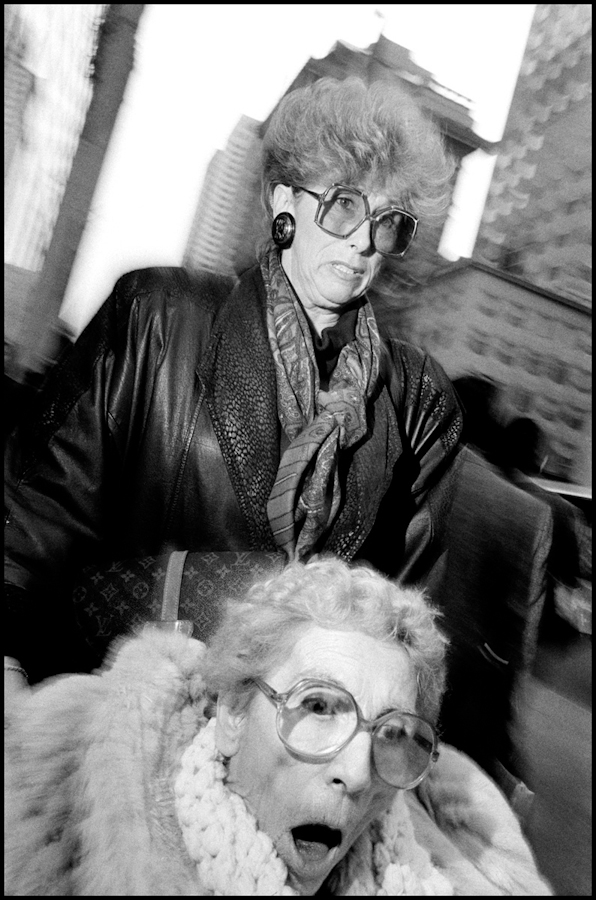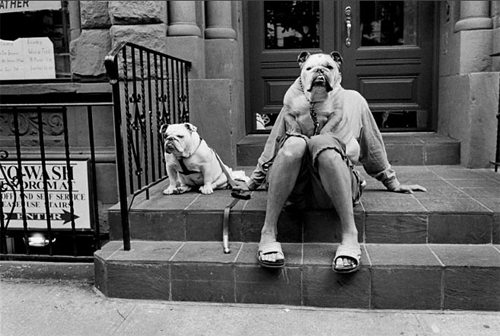Garry Winogrand
Winogrand
(1928-1984) known for his portrayal of American life in the early 1960s. At the
time of his death in 1984, he left more than 2,500 undeveloped rolls of film.
6,500 rolls of that had been developed but not contact/printed and 300
apparently untouched, unedited contact sheets (lots and lots of film) I find
this really odd, I wouldn’t have been able to keep undeveloped film. I’m a
curious person so when I shoot just one roll of film I’m eager to develop it,
even in the developing stage I’m always trying to peek at my film. It’s really
odd, I mean wouldn’t you as a photographer want to see how your shoot went and
how your photographs look?
He photographed, he said, 'to see what the world would look like in
photographs'.
I find
Winogrands work very sophisticated, his subjects are always dressed nicely, the
composition is always perfect as well as the contrast. I read that he was fond
of visual puns which you can see in some of his work (who doesn’t like a pun here
and there?).
You can tell
just by the amount of film taken, that Winogrand was passionate about
photography. In some ways he reminds me of Bruce Gilden, the way he's up close
to his subjects and surrounds himself with what’s going on around him, he’s in
the action and not just standing on the side lines.
I enjoy
looking at Winogrands images (especially his visual puns). Although I find him
a little odd he does produce good images.
Bruce Gilden
Gilden
(1946) who is a well-known Street Photographer and is mesmerized by the unique
energy of the streets often calling them his 'second home'.
What sets
Gilden apart from other photographers is his ability to see and capture the essence
of a character, a place or a moment something learned by years of walking the
street with his eyes wide open.
Gildens way
of working is very..... Well it's interesting, I don’t think he believes in
personal space. He’s very forward, a strong believer of his rights and isn't
afraid to get in the action. I don’t think I could do what he does, I’d be too
nervous and probably too scared to even get that close to my subject.
http://www.youtube.com/watch?v=kkIWW6vwrvM

As you can
see Gilden uses flash, I think that has a big impact on the facial features of
his subjects, I don’t think he would archive them if he didn’t use one. It adds to
the element of surprise.

Gilden has
published many books on his work like after the off which explores
Ireland and its passion for horseracing, Haiti resulting Gilden to return to the country nineteen times, when arriving
there he said ‘where have I been?’ . The country must have attracted
Gilden, The work he produced for this book is quite different to his previous
work not a great deal different he still uses the flash but he doesn’t concentrate
on one subject more of small groups. They look more aggressive as well, where
as his work in New York the subjects are just surprised.
.
Gilden is
without a doubt a great photographer, although his approach to his subjects is quite
forward and invades there 'bubble' of personal space. But i think if he didn’t
have the courage to do this he wouldn’t have been able to capture the perfect scenes
or the surprised expressions. You can capture a great street scene on the side
lines but as you can see with Gildens work the closer you are the more you feel
like you’re there, like you’re the one standing in front of the subject.
Through looking at Gildens work I’ve come to understand Street Photography more
in a way, he’s shown me that (although it’s scary) it’s probably better to get
in the action, to make my photos have that street feel to it. I’m definitely
excited to work more with the Street Photography genre of photography and
experiment more with it. I think it’s a great way to help with confidence and
also people.
Lee Friedlander
Friedlander
(1934) is an American photographer who photographed the American social
landscape in 1948. Friedlander has captured many humours images and worked with
shadows and reflections among the chaos of city life, he is also recognized for
a group of self-portraits he began in the 1960s.

Friedlander
has a passion for jazz as well as photography and says that after photography,
jazz is his second largest passion in life.
Friedlander
also did a series of images called America by Car where he basically
went to find America in his rental car. But instead of getting out of his car
he instead used the side view mirror, rear view mirror, the windshield, and the
side windows as picture frames to capture his images. Like Umbo Friedlander is
a creative photographer, he uses a very different style of photography that is
unique and also appealing to the eye.
 To me a portrait can be taken to a more creative level. Instead of capturing the face of a person you pick out something that defines them and seperates them from everyone else. Something that shows who they are, like a tattoo, a scar, their hands to show hard work maybe, a tear, their hair anything that shows their differences with other people, their individual characters.
To me a portrait can be taken to a more creative level. Instead of capturing the face of a person you pick out something that defines them and seperates them from everyone else. Something that shows who they are, like a tattoo, a scar, their hands to show hard work maybe, a tear, their hair anything that shows their differences with other people, their individual characters. So to me a portrait is the identity of a person, as long as it portrays who they are and has a piece of the person/persons in the image its a portrait.
So to me a portrait is the identity of a person, as long as it portrays who they are and has a piece of the person/persons in the image its a portrait. 







